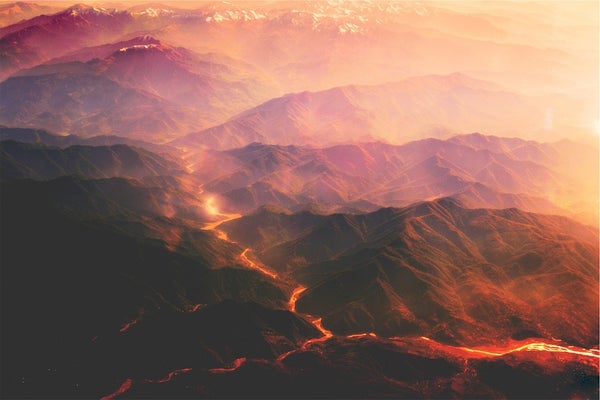This article was published in Scientific American’s former blog network and reflects the views of the author, not necessarily those of Scientific American
We've been spending a lot of time lately around terrestrial volcanoes, and we're about to spend a lot more. We've got LIPs to talk about! We've got a baby crater lake on Kilauea! We've got some really wonderful stuff around Mount Rainier to explore! It's going to be a fiery few months around here.
For this edition of GeoBits, we could have traipsed around a few more of Earth's volcanoes (Yellowstone's always nice this time of year!), but I had a folder full of out-of-this-world volcanoes and you know what? I'd like to go spacefaring for a bit. I think you all are going to love our adventures out to some of the most bizarre volcanic worlds we've so far discovered. It's raining lava! And sometimes, the lava is ice! Let's explore:
Universe Today: Metal Asteroid Psyche Might Have Had Volcanoes of Molten Iron
On supporting science journalism
If you're enjoying this article, consider supporting our award-winning journalism by subscribing. By purchasing a subscription you are helping to ensure the future of impactful stories about the discoveries and ideas shaping our world today.
In advance of NASA’s mission to Psyche, Nimmo became interested in metallic asteroids. He was interested in their composition, and in what clues to that composition could be provided by meteorites here on Earth. He had graduate student Jacob Abrahams run some models of how the asteroids formed and cooled.
It turns out, at least some of these asteroids would have experienced volcanic eruptions of molten iron.
“One day he turned to me and said, ‘I think these things are going to erupt,'” Nimmo said in a press release. “I’d never thought about it before, but it makes sense because you have a buoyant liquid beneath a dense crust, so the liquid wants to come up to the top.”
Forbes: These Two-Sided Alien Worlds Have Magma Oceans And Boulder Rainstorms
If you really want to find the strangest volcanoes in the universe, however, you’ll have to at the very least head outside of our Solar System. A handful of exoplanets have been found to be nothing short of volcanic hells in deep space – and, in effect, entire hemispheres of these worlds are actively erupting at any one time.
Universe Today: Rocky World COROT-7b Rains Rocks
If any creature lives on COROT-7b, the recently confirmed rocky exoplanet, they might think the sky is falling. This planet is close enough to its star that its “day-face” is hot enough to melt rock, and according to models by scientists at Washington University in St. Louis, COROT-7b’s atmosphere is made up of the ingredients of rocks and when “a front moves in,” pebbles condense out of the air and rain into lakes of molten lava below. Yikes!
VICE Motherboard: Meet Wright Mons: Pluto’s Massive Ice Volcano
The New Horizons spacecraft is well on its way to its next target in the Kuiper Belt, but continues to supply us with new views of Pluto. The latest image release gives us our first color view of what could be the largest ice volcano in the outer Solar System.
Unofficially named Wright Mons in honor of the Wright brothers, the massive ice caldera is located just south of Pluto's icy heart: a frozen terrain named Sputnik Planum. Wright Mons is quite massive, spanning 90 miles across and 2.5 miles high. Resembling the shield volcanoes we see on Earth, Wright Mons would spew an icy slurry of ammonia and nitrogen as opposed to rock and lava.
(High-resolution images from NASA can be found here.)
Gizmodo: Massive Lava Waves Detected on Jupiter’s Moon Io
Io is the closest thing we have to hell in our Solar System, a Jovian moon that features hundreds of active volcanoes and expansive lakes filled with lava. New observations suggests that the largest of these lakes, Loki Patera, produces enormous waves that repeatedly flow around the molten surface.
Thanks to a rare orbital alignment between Europa and Io, an international team of researchers has identified and tracked a pair of lava waves as they coursed around Loki Patera, which is larger than Lake Ontario, and with a surface area of 8,300 square miles (21,500 square km). The most likely explanation for this apparently periodic wave action is an overturning circulation pattern, in which cool surface crust slowly thickens and sinks, pulling nearby crust along with it in a wave that spreads across the surface.
